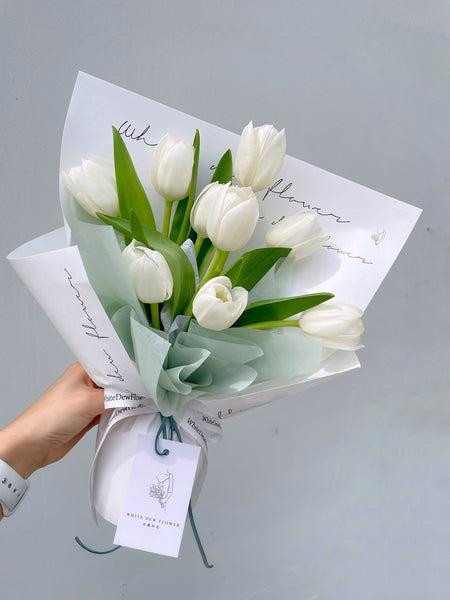Tulips, with their vibrant colors and graceful petals, have captured the hearts of flower enthusiasts and romantics alike for centuries. As one of the most beloved flowers in the world, tulips hold a special place in the art of floral arrangements. A carefully crafted tulip bouquet can convey a wide range of emotions, from love and admiration to friendship and gratitude. In this article, we will explore the enchanting elegance of tulip bouquets, delving into their rich history, symbolism, and the art of creating captivating arrangements that brighten any occasion.
The Captivating History of Tulips
Originating from Central Asia, tulips have a captivating history that spans centuries and continents. They were first cultivated by the Ottoman Empire in the 11th century, and their beauty and rarity made them highly sought after by European traders during the 16th century. This period, known as "Tulip Mania," saw tulip bulbs reaching exorbitant prices, symbolizing wealth and status. Today, tulips are grown and cherished worldwide, representing a timeless symbol of beauty and elegance.
A Kaleidoscope of Colors
Tulips come in an astonishing array of colors, ranging from classic reds and pinks to serene whites, lively oranges, and majestic purples. Each hue holds a unique meaning, making tulip bouquets ideal for conveying specific sentiments. Red tulips, for instance, symbolize true love and passion, while yellow tulips represent sunshine and cheerful thoughts. White tulips are associated with purity and forgiveness, and purple tulips convey royalty and admiration. This diverse spectrum of colors allows for endless creativity in crafting tulip bouquets that resonate with the recipient's emotions.
Seasonal Beauty
One of the delightful aspects of tulip bouquets is their seasonality. While they are often associated with spring, tulips bloom during various seasons, depending on the variety and geographic location. Spring tulips are a symbol of renewal and are especially popular during Easter and Mother's Day. In colder climates, tulips may bloom later in the year, bringing a burst of color and joy to autumn and winter arrangements. This adaptability makes tulip bouquets a versatile choice for year-round gifting and décor.
The Art of Tulip Arrangements
Creating an enchanting tulip bouquet requires a delicate touch and an eye for harmonizing colors and textures. Tulips have long, graceful stems that can be showcased beautifully in both formal and informal arrangements. For a classic and elegant look, a mono-floral bouquet of a single tulip color can make a striking statement. On the other hand, mixing different colors and varieties can create a vibrant and dynamic bouquet that exudes warmth and cheerfulness.
Pairing Tulips with Complementary Flowers
Tulips' versatility makes them excellent companions to various other flowers in mixed bouquets. They harmonize well with blooms like roses, peonies, lilies, and daisies, enhancing the overall appeal of the arrangement. Combining tulips with complementary flowers adds depth and dimension, creating visually captivating bouquets that are perfect for weddings, anniversaries, or special occasions.
Sentiments Expressed through Tulip Bouquets
The language of flowers has been used for centuries to communicate sentiments and emotions without words, and tulips play a significant role in this tradition. Gifting a bouquet of tulips conveys an array of heartfelt messages. A bouquet of red tulips signifies deep love and passion, making it an ideal gift for anniversaries or Valentine's Day. Yellow tulips are perfect for expressing friendship and joy, making them a thoughtful choice for celebrating accomplishments or milestones. Meanwhile, pink tulips are often associated with admiration and appreciation, making them a fitting gesture of gratitude or support.
Caring for Tulip Bouquets
To ensure the longevity of your tulip bouquet, proper care is essential. Upon receiving a bouquet, trim the stems at an angle and place the tulips in a clean vase filled with fresh water. Tulips are known to continue growing after being cut, so regularly adjust the water level to keep the stems submerged. Additionally, avoid placing tulip bouquets in direct sunlight or near heating vents to prevent wilting and prolong their beauty.
For More Info:-






Comments